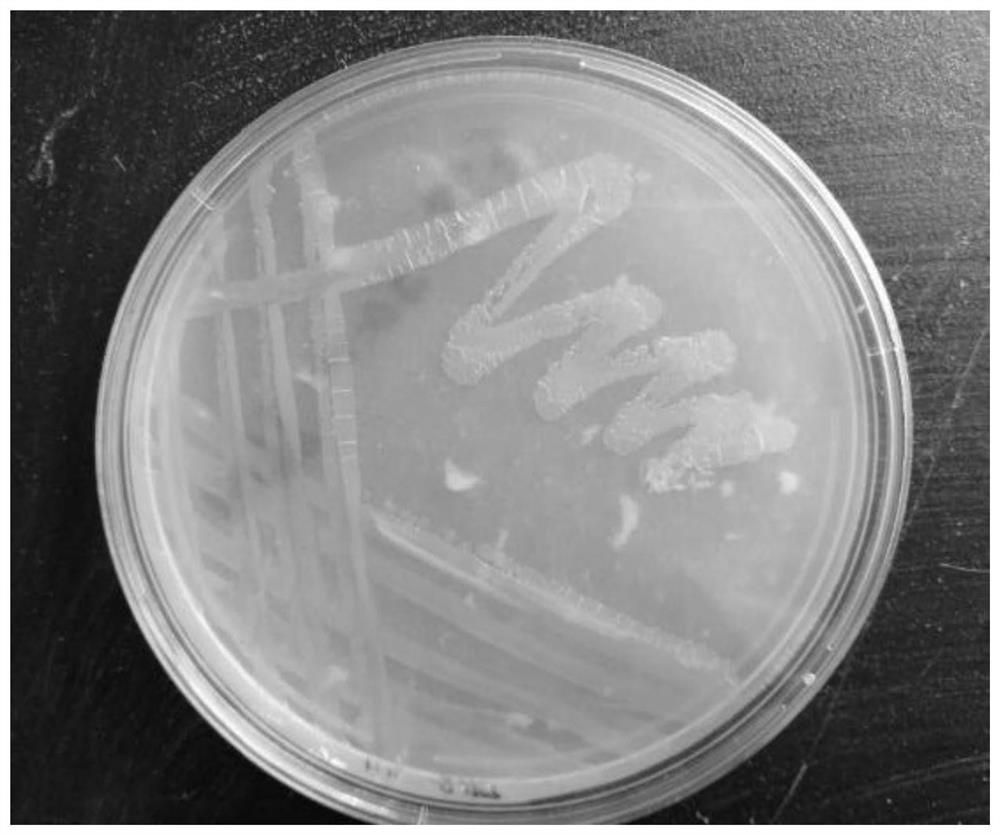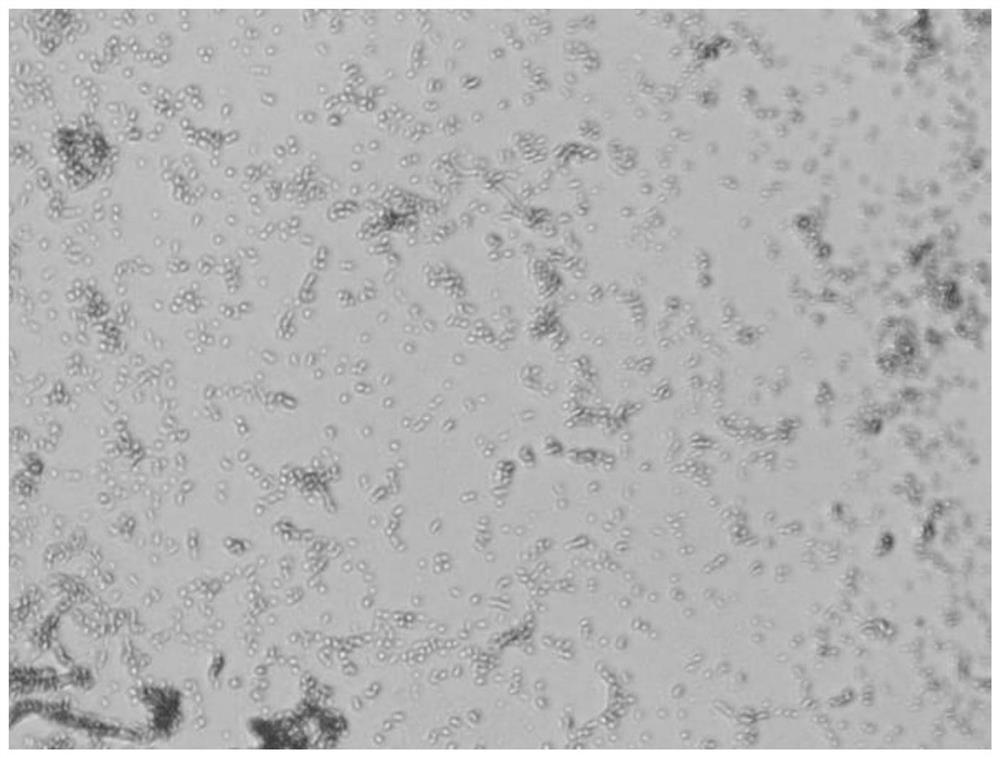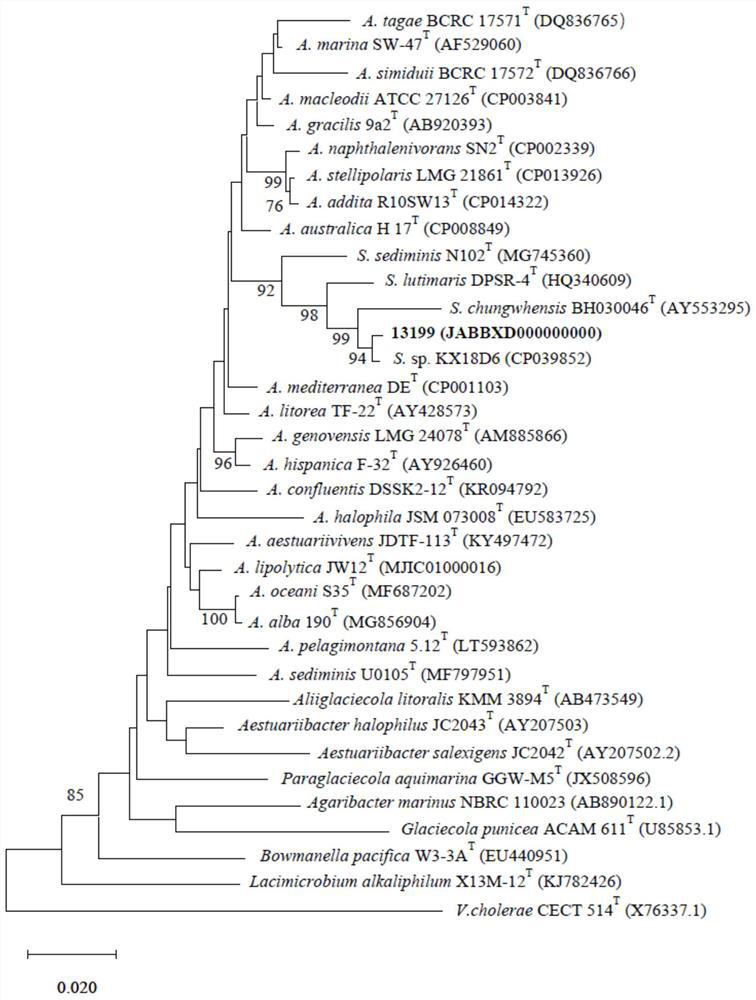Salinimonas profundi 13199 as well as CRISPR-Cas system and application thereof
The technology of a single-cell bacterium, CGMCC1.17396, is applied to Halomonas abyssalum 13199 and its CRISPR-Cas system and application field, which can solve the problems of class2 complexity and obstacles to the development and application of CRISPR-Cas system
- Summary
- Abstract
- Description
- Claims
- Application Information
AI Technical Summary
Problems solved by technology
Method used
Image
Examples
Embodiment
[0039] 1. The bacterial strain containing the CRISPR-Cas system of the present invention Salinimonas profundi Separation method of 13199:
[0040] Take 2 g of the sediment sample, place it in a 50 mL Erlenmeyer flask filled with 18 mL of sterile artificial seawater (containing 3.0% sea salt), shake it on a shaker at 28 °C at 180 rpm for 30 min, and obtain the bacterial suspension ( is 10 -1 The soil dilution solution, that is, the sample solution diluted 10 times); Then use 10 times serial dilution method to dilute successively to obtain 10 -3 and 10 -4 Concentration gradient dilution; then from 10 -4 Take 0.1 mL of the concentration gradient suspension and spread it on the PYGV recovery medium supplemented with 2.5% sea salt with a sterile applicator. Each 1000 mL of PYGV medium contains 20 mL of mineral salt solution, 0.25 g of peptone, 0.25 g of yeast extract, 15 g of agar powder, pH 7.0-7 2. Sterilize at 121°C for 20 minutes, and add 2.5% when cooling to about 60°C 1...
PUM
| Property | Measurement | Unit |
|---|---|---|
| diameter | aaaaa | aaaaa |
| diameter | aaaaa | aaaaa |
Abstract
Description
Claims
Application Information
 Login to View More
Login to View More - R&D
- Intellectual Property
- Life Sciences
- Materials
- Tech Scout
- Unparalleled Data Quality
- Higher Quality Content
- 60% Fewer Hallucinations
Browse by: Latest US Patents, China's latest patents, Technical Efficacy Thesaurus, Application Domain, Technology Topic, Popular Technical Reports.
© 2025 PatSnap. All rights reserved.Legal|Privacy policy|Modern Slavery Act Transparency Statement|Sitemap|About US| Contact US: help@patsnap.com



